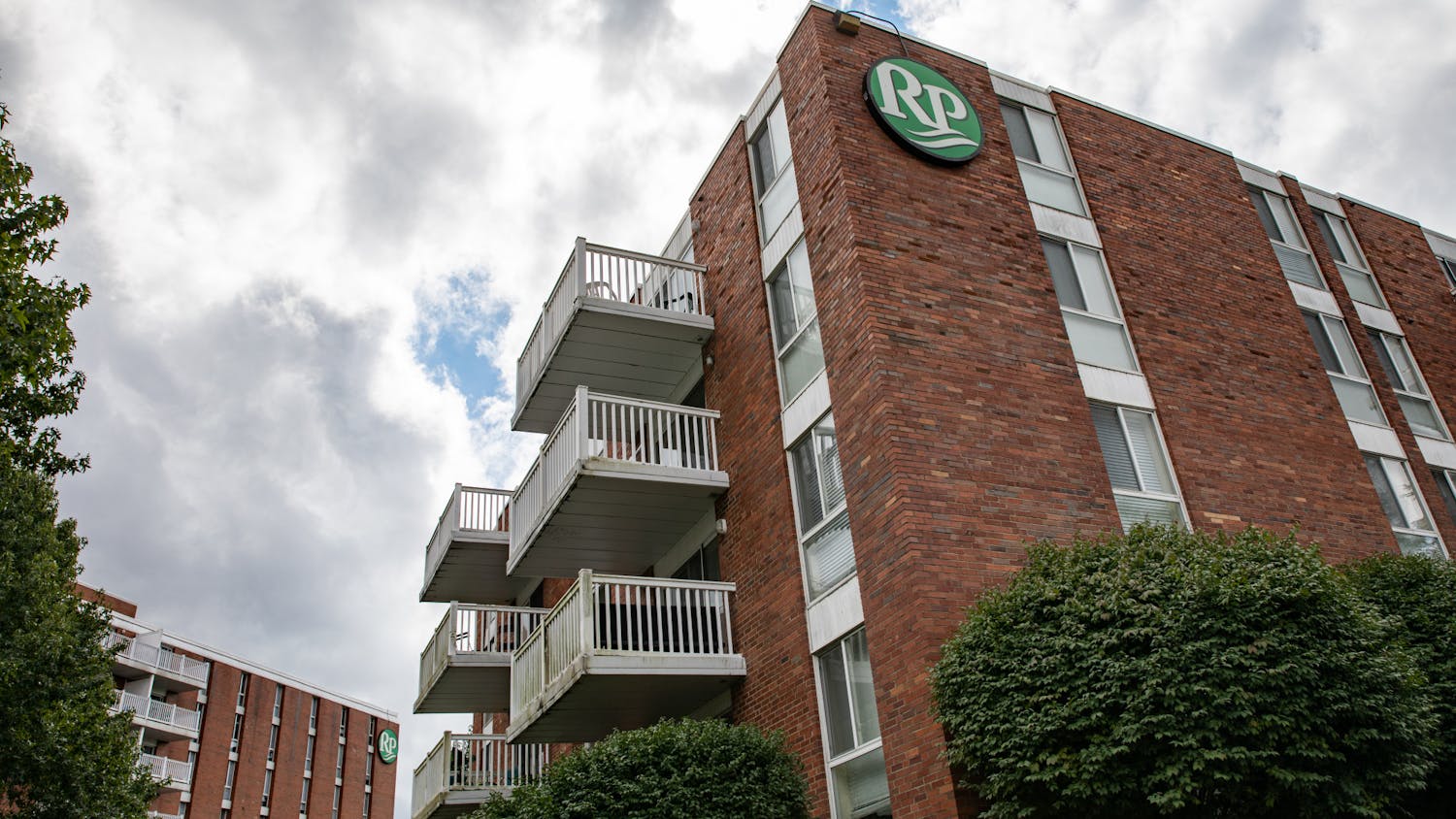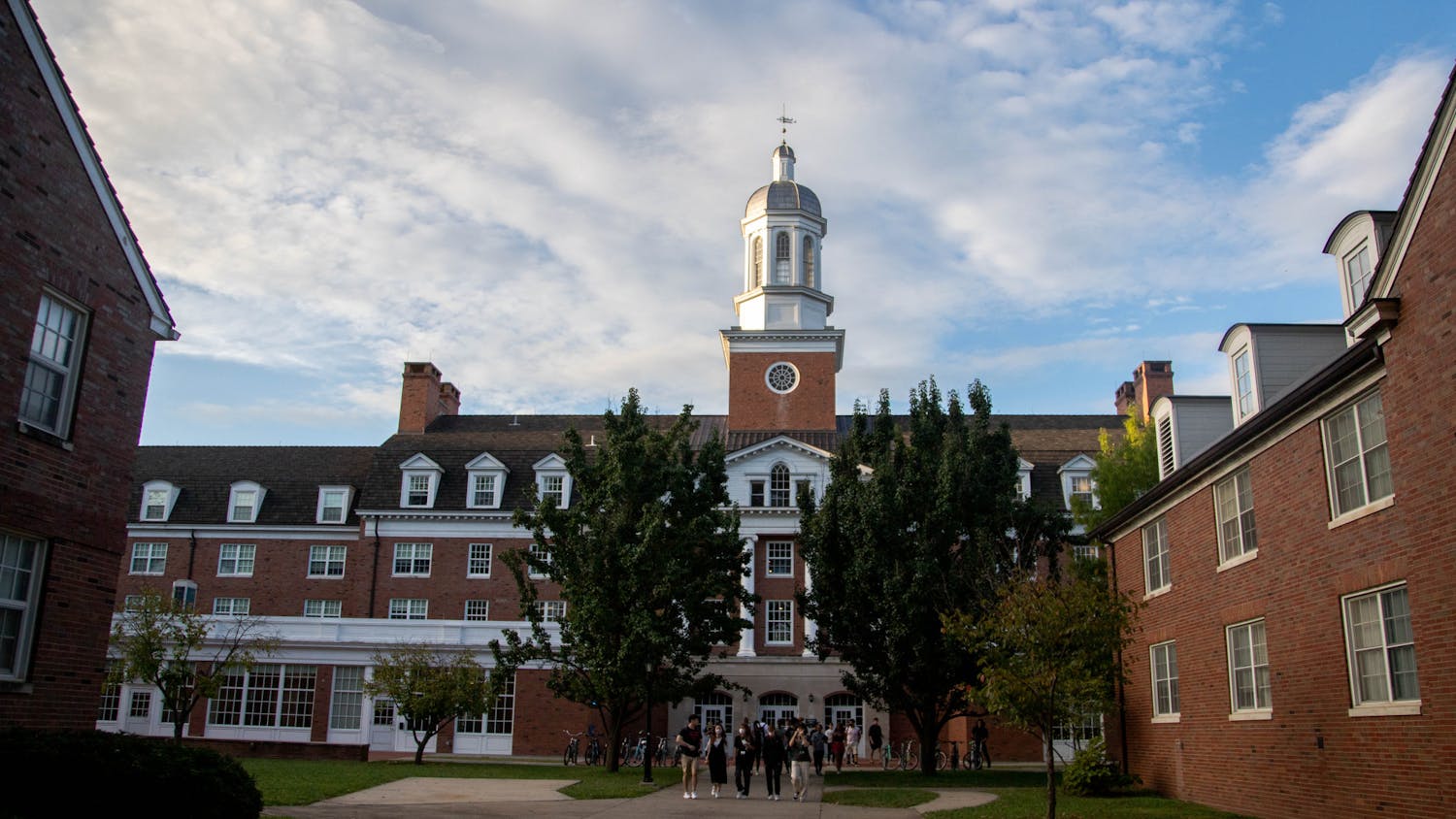At the start of Homecoming weekend last Friday, Ohio University administrators, including OU President Hugh Sherman, officially opened the Pawprint Park on OU’s South Green.
The park features two pawprint-shaped outlines that can be seen from above, one of which is designated as a campus hammocking area with metal poles and shade screens, and the other serves as an open concrete and gravel space for students and communities on campus to gather and hold events.
The space was conceptualized collaboratively between OU Housing and Residence Life, the Campus Involvement Center, the Office of Sustainability, Campus Recreation and various students to create a site that would serve programmatic needs as well as student wants, Jneanne Hacker, executive director of Housing and Residence Life, said.
When brainstorming, students expressed the desire to incorporate a hammock park, which OU administrators were previously considering in the design, Hacker said. Observing the frequency of hammocking students across campus, the university sought to find a more sustainable way for them to enjoy the activity.
In a university release from 2019 about measures to keep campus trees healthy, OU Landscape Coordinator Susan Calhoun mentioned the idea of creating a hammock park on campus to preserve tree life.
“It takes time for trees to grow large enough to create shade, absorb stormwater and provide food and habitat for other living things,“ Calhoun said in the release. "Investing in planting and preserving trees is key.”
OU alum Maya Cox, who received a bachelor’s degree in entrepreneurship and environmental studies, worked on a research project covering the relationship between tree health and hammocking on campus in conjunction with Calhoun and the Office of Sustainability. In Cox’s report, the idea of bringing hammocking poles to campus was suggested.
Cox cited research showing the harmful effects of hammocking on trees when not done properly, including damage to the bark, which increases the risk of disease, soil compaction, which then limits root growth and water absorption and stunts growth.
Cox also conducted a limited survey of 23 people on campus, asking about hammocking practices and how they would feel about hammock pole alternatives.
“Everyone mentioned how unique the idea of hammock poles on campus would be and how they would love to have somewhere to hammock without damaging the trees,” Cox wrote in the report.
The hammock section of the park has a series of poles that can accommodate up to 56 hammocks at a time, Hacker said. She also described the new park as a place that will not only meet sustainability needs, but also student needs for gathering places.
“We are excited about engaging students about outdoor area and giving them space just to come and really focus on their sense of well-being by being outside in their hammocks,” Hacker said. “But, then also being intentional with working with our in-home student leaders to create programming to draw students out into that space, to not only connect students within a hall but connect students across their halls.”
Sherman spoke at the opening, commending the Division of Student Affairs and mentioning the importance of residential engagement space within the college experience.
“On a residential campus, it’s the many activities that take place in the residence halls, in recreation, with all the student organizations that we have,” Sherman said. “That’s what provides the really special education that we think we provide.”
See what Pawprint Park looks like in the video below.






